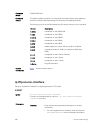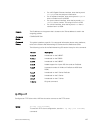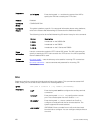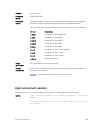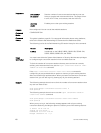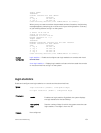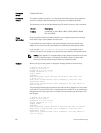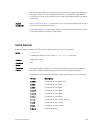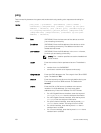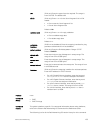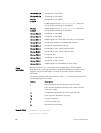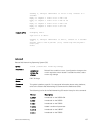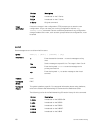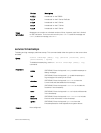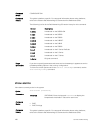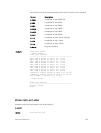
ping
Test connectivity between the system and another device by sending echo requests and waiting for
replies.
Syntax
ping [host | ip-address | ipv6-address] [count {number |
continuous}] [datagram-size] [timeout] [source (ip src-ipv4-
address) | interface] [tos] [df-bit (y|n)] [validate-reply(y|
n)] [outgoing-interface] [pattern pattern] [sweep-min-size]
[sweep-max-size] [sweep-interval] [ointerface (ip src-ipv4-
address) | interface]
Parameters
host (OPTIONAL) Enter the host name of the devices to which
you are testing connectivity.
ip-address (OPTIONAL) Enter the IPv4 address of the device to which
you are testing connectivity. The address must be in the
dotted decimal format.
ipv6-address (OPTIONAL) Enter the IPv6 address, in the x:x:x:x::x format,
to which you are testing connectivity.
NOTE: The :: notation specifies successive hexadecimal
fields of zeros.
count Enter the number of echo packets to be sent. The default is
5.
• number: from 1 to 2147483647
• continuous: transmit echo request continuously
datagram size Enter the ICMP datagram size. The range is from 36 to 15360
bytes. The default is 100.
timeout Enter the interval to wait for an echo reply before timing out.
The range is from 0 to 3600 seconds. The default is 2
seconds.
source Enter the IPv4 or IPv6 source ip address or the source
interface. For IPv6 addresses, you may enter global
addresses only. Enter the IP address in A.B.C.D format.
• For a 10-Gigabit Ethernet interface, enter the keyword
TenGigabitEthernet then the slot/port information.
• For a 40-Gigabit Ethernet interface, enter the keyword
fortyGigE then the slot/port information.
• For a port channel interface, enter the keywords port-
channel
then a number. The range is from 1 to 128.
• For a VLAN interface, enter the keyword vlan then a
number from 1 to 4094.
• For a Tunnel interface, enter the keyword tunnel then a
number from 1 to 16383.
134
Control and Monitoring



